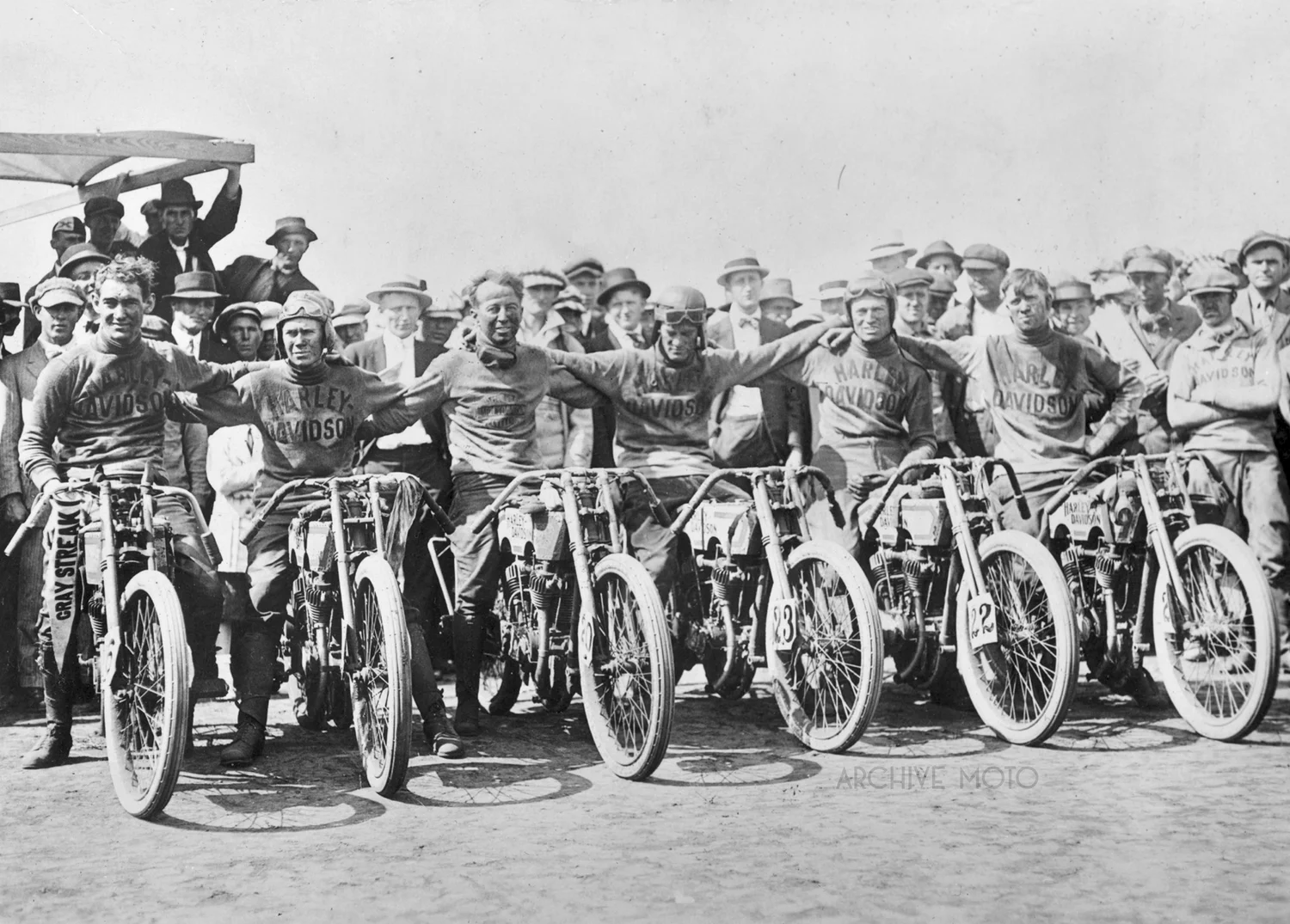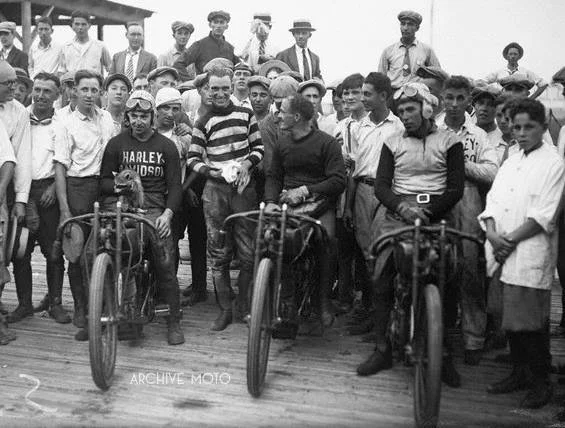Undoubtedly one of the most iconic images from the early days of the Harley-Davidson racing program is the shot of veteran racer Ray Weishaar holding a small pig at the 1920 labor day race in Marion, IN. Many point to those images of Ray and his pet pig as the origin of the Harley "Hog” association, but that story is one readily available from a number of sources. What offers a bit more intrigue are the handful of snapshots capturing other racers with an array of different critters, the ones that didn’t stick. Could it be that during the high stakes relaunch of professional motorcycle racing in America there was a race off of the track, a mascot war? Perhaps it was not so dramatic, but there are a few photographs, like one of Maldwyn Jones holding a coyote pup, or another image of Walt Higley holding a turtle and Ralph Hepburn holding a rabbit at the 1921 Dodge City race that provide another fascinating detail of post-war racing culture. Take a close look at this image and you may just spot such a critter.
Taken at the massive 1.25 mile long Baltimore-Washington Speedway in Laurel, MD on September 7, 1925, this photo captures the Harley-Davidson team posing for a victory shot yet again as they steamrolled their way through the ’25 season. In a series of AMA National Championship races held on the boards in Laurel, the last gentlemen of Harley’s legendary Wrecking Crew pose on board their powerful factory two cam machines after having put on a clinic for the crowd and competition. Jim Davis and Harley-newcomer Joe Petrali were on a tear, each lowering records as they traveled the country, and the races in Laurel were no exception. Davis took the 5 Mile National Title in a record time of 2 minutes 45 seconds, a blistering average speed of 111 mph. It was Joe Petrali, who had only just joined the crew after a mixup with his Indian machine at the Altoona track two months prior that did the real cleaning up. Smoking Joe took the 10 Mile, the 25 Mile, and the 50 Mile National Championship titles breaking two previous speed records, one of which being the milestone 10 Mile speed of 101 mph set by one of the Wrecking Crew’s founding fathers, Harry “Otto” Walker back in 1921 at the board track in Fresno.
Here we see the victors of the Harley-Davidson crew at Laurel that day, along with a rather odd furry companion. A stoic Joe Petrali is farthest to the right, and Eddie Brinck who came in second behind Smoking Joe in each event is in the middle. Jim Davis, winner of the 5-mile championship title is standing in the stripes, and finally, Bill Minnick, who 3rd place in the 50 Mile race is on the left along with the not-so legendary Harley-Davidson raccoon. Where he acquired his raccoon remains a mystery, but the mammal bandit is yet another mysterious pet in the menagerie of Harley-Davidson team mascots from the early 1920’s.





